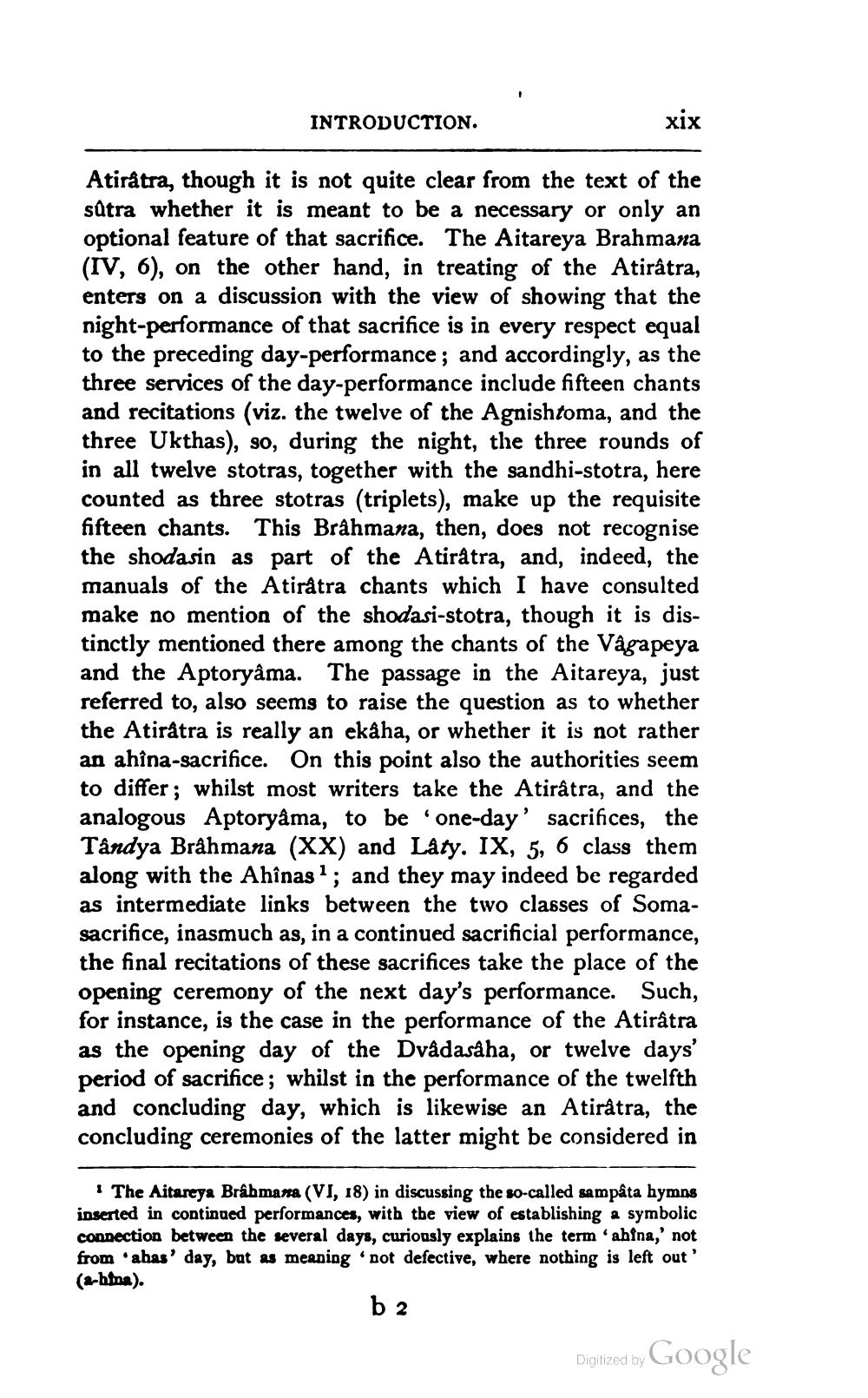________________
INTRODUCTION.
xix
Atirätra, though it is not quite clear from the text of the sútra whether it is meant to be a necessary or only an optional feature of that sacrifice. The Aitareya Brahmana (IV, 6), on the other hand, in treating of the Atirâtra, enters on a discussion with the view of showing that the night-performance of that sacrifice is in every respect equal to the preceding day-performance; and accordingly, as the three services of the day-performance include fifteen chants and recitations (viz. the twelve of the Agnishtoma, and the three Ukthas), so, during the night, the three rounds of in all twelve stotras, together with the sandhi-stotra, here counted as three stotras (triplets), make up the requisite fifteen chants. This Brahmana, then, does not recognise the shodasin as part of the Atiratra, and, indeed, the manuals of the Atirâtra chants which I have consulted make no mention of the shodasi-stotra, though it is distinctly mentioned there among the chants of the Vâgapeya and the Aptoryâma. The passage in the Aitareya, just referred to, also seems to raise the question as to whether the Atirätra is really an ekâha, or whether it is not rather an ahỉna-sacrifice. On this point also the authorities seem to differ; whilst most writers take the Atirâtra, and the analogous Aptoryâma, to be one-day' sacrifices, the Tandya Brahmana (XX) and Laty. IX, 5, 6 class them along with the Ahînas ? ; and they may indeed be regarded as intermediate links between the two classes of Somasacrifice, inasmuch as, in a continued sacrificial performance, the final recitations of these sacrifices take the place of the opening ceremony of the next day's performance. Such, for instance, is the case in the performance of the Atirâtra as the opening day of the Dvadasäha, or twelve days' period of sacrifice; whilst in the performance of the twelfth and concluding day, which is likewise an Atiratra, the concluding ceremonies of the latter might be considered in
· The Aitareya Brahmana (VI, 18) in discussing the so-called sampâta hymns inserted in continued performances, with the view of establishing a symbolic connection between the several days, curiously explains the term 'ahina,' not from abas' day, but as meaning not defective, where nothing is left out' (a-btna).
b 2
Digitized by Google




